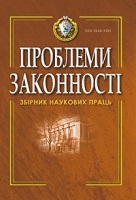Від нейтрального статусу до курсу на колективну безпеку: еволюція підходів України до забезпечення національної безпеки
From Neutral Status to a Course Towards Collective Security: Evolution of Ukraine's Approaches to Ensuring National Security
Author(s): Maksym RomchukSubject(s): Security and defense, Peace and Conflict Studies, Russian Aggression against Ukraine
Published by: Національний юридичний університет імені Ярослава Мудрого
Keywords: state sovereignty; national interests; national security; permanent neutrality; collective security; North Atlantic integration; defense; war; Ukraine; NATO;
Summary/Abstract: Permanent neutrality and the organization of collective security is a complex and ambiguous choice that Ukraine has faced since gaining independence. The purpose of the article is to study the evolution of the security policy of independent Ukraine, which has gone a long way from the proclamation of the status of a permanently neutral and non-aligned state to the constitutionally enshrined foreign policy course towards Euro-Atlantic integration. The work uses historical, dogmatic and comparative legal methods in the course of studying the historical aspect of the genesis of national security policy. The author uses the dialectical method to study various ways of ensuring national security, which made it possible to distinguish two ways: the declaration of the status of a permanently neutral state or participation in a collective security organization. The chronological boundaries of the study are defined from the moment of proclamation of Ukraine’s state sovereignty. The article proves that political and scientific debates on the benefits of neutrality or participation in a collective security organization for ensuring the sovereignty and territorial integrity of the state, as well as its national security of European countries, are related to the bipolar model of international relations that emerged during the Cold War era. Under these conditions, some European states (Austria, Ireland, Finland, Sweden), despite the negative outcome of World War II, when the status of neutral states was grossly violated, still wanted to stay outside the confrontation between the two military and political blocs. To this end, they declared themselves permanently neutral and participated in the non-aligned movement. The article notes that the departure from the bipolar model has temporarily dampened the debate. However, the policy of revanchism and neo-imperial ideology adopted by the Russian leadership forced European states to rethink the feasibility of maintaining permanent neutrality in the context of the current geopolitical situation. The author reveals that at the time of the creation of the Ukrainian state, the preference for the status of a permanently neutral and non-aligned state as a guarantee of Ukraine’s national security was conditioned by the presence of nuclear weapons on its territory, which made it impossible to participate in the collective security organization (NATO). Ukraine’s nuclear disarmament, which was carried out under pressure from Russia and the United States, opened the way for normalization of relations with the European Union and NATO. At the same time, having chosen NATO membership as a guarantee of successful security, Ukraine in the twenty-first century demonstrated ineffectiveness in realizing its intention due to fluctuations in the foreign policy course of Ukrainian presidents. The aggression against Ukraine launched by Russia in 2014 made participation in the collective security organization (NATO) a matter of time. The approximation of the Armed Forces of Ukraine to NATO standards has yielded positive results in repelling Russia’s armed aggression. The Armed Forces of Ukraine, which can be considered the most experienced army in Europe today, make Ukraine a desirable NATO member after the war.
Journal: Проблеми законності
- Issue Year: 2023
- Issue No: 161
- Page Range: 30-56
- Page Count: 27
- Language: Ukrainian

